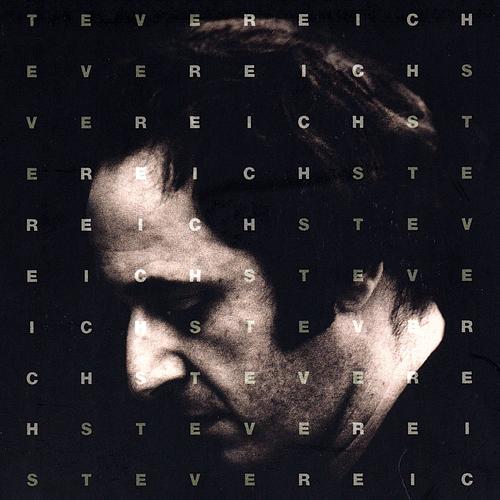11. Steve ReichWorks 1965–1995

I discovered him at university when I was 20. The first thing I ever heard was ‘Come Out’ which has a sampled voice that just keeps saying "blood, come out" and it just keeps beating, so this was Steve Reich’s very early tape phase experiments where he stuck it on two tapes and would press play at the same time and they start off together and then gradually start to move apart. First of all you get an echo on the vocal, and then as the two vocals move away it starts to kind of [imitates the sound], and it’s so trippy it’s amazing. I feel like it’s the earliest rap or something, it’s got this really amazing sample, this guy who’s street, the way he’s talking – his accent’s amazing and authentic, and then you just have like the rhythm that’s created through words.
Percussiveness and then there’s … syncopation starts happening and it’s constantly evolving, moving, different rhythms, and that’s basically his thing. ‘Come Out’ inspired me when I was at uni. I made a tape and slide piece, which is this projected piece that you animate using different slides. [Reich]’s using really graphic, violent imagery and I got a little boy to talk about fights at school, he was like six! I was asking how he felt about the fighting, has anyone ever tried to punch him, how does it feel? And I put his voice along with all these images of men fighting, and I phased it and did weird things to it, laid them all on top of each other, just experimenting in my own way with that.
But that really inspired me and I started to delve more into Steve Reich. There are some preachers which he did tape phase experiments with, like "it’s gonna raiiiiin, it’s gonna rain!", such a musicality to what he’s doing even though what he was doing was very conceptual. Again, it was a very rigid, composer-y thing to do, which is to set up a tape experiment, but within that he chose words and expressions that are really emotional and move through all different phases, making you think about all sorts of things and culturally, politically, there’s a lot behind it. And then on this [Works] there’s ‘Music for 18 Musicians’ which I absolutely love. Eighteen musicians would sit round, play their rhythm and then the next person would start a fraction of a second after them so they’d be in sync sometimes all playing the same thing but with a slightly different time part, so it totally fucked your brain. But the sounds that come out: you get all these weird intervals, syncopations, harmonies, rhythmic counterparts that are happening but the key that he chooses is heartbreaking and amazing as well. There are certain notes and harmonies, certain two notes will just start to really vibrate together and it just starts to create an amazing cinematic, filmic burst of ideas in my mind. It’s almost like meditation or mantras, Ravi Shankar or something for me, Reich has done a similar thing. Like it just keeps on going round and round and then you get drones and then other drones come in and then they create textures that are moving all the time, so it’s almost like a meditative state that you get into.


